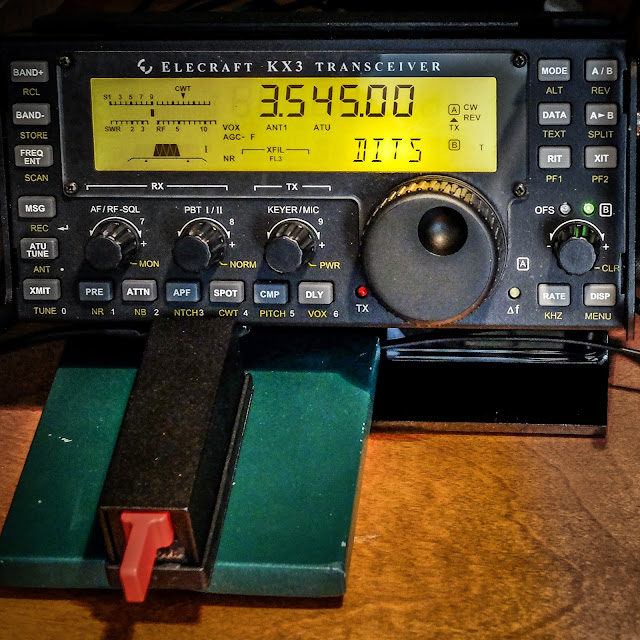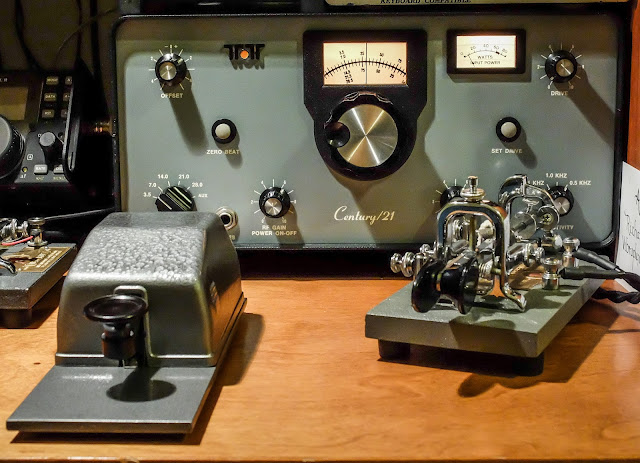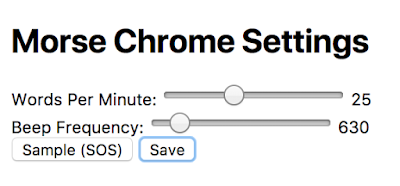CW - emergency communication ?
With the recent spate of natural disasters and dire warnings of impending doom, from terrorists and rogue nations alike, it got me to looking into my previous emergency ops participation.
When I was a newly minted amateur operator about a decade ago, I participated some in traffic nets and obtained FEMA certifications to participate in emergency operations. At the time I had built my go-kit, consisting of battery powered FM 2m/440 equipment and portable J-poles. It even had wheels and a pull handle, very spiffy. But I wasn't much concerned with CW.
With a re-kindled interest in QRP and CW operations, it got me to looking again at participation in emergency ops, and to my surprise there are few states that even list CW as a mode for emergency communication frequencies.
The following
table lists the only pre-approved ARES frequencies I can find, designated for CW. There are 37 states missing from this list... If you live in a state other than those listed below;
no CW emcomm for you buddy.
| STATE | FREQUENCY
kHz | MODE | SECTION
DISTRICT | DESCRIPTION |
| AR | 3,570.00 | CW | | MTN/OZ, KCW Traffic NET |
CA
| 7,111.00 | CW |
SAC
| (UP) NTS/ARES/Traffic/Calling, Daytime |
| 3,711.00 | CW | (UP) Daytime |
| LA | 3,673.00 | CW | LA | NET |
MI
| 1,812.00 | CW |
MI
| Alternate Emergency Frequency (Winter/low flux) |
| 3,563.00 | CW | Emergency |
| 7,068.00 | CW | Alternate Emergency Frequency (Summer/high flux) |
| MN | 3,568.00 | CW | MN | ARES |
| MS | 3,570.00 | CW | MS | MS/AR CW Traffic Net |
| NE | 3,540.00 | CW | NE | Primary |
| NM | 3,540.00 | CW | NM | Primary |
NC
| 3,573.00 | CW |
NC
| Primary |
| 3,571.00 | CW | Alternate |
| OH | 3,577.00 | CW | OH | |
| OR | 3,587.00 | CW | OR | Daily 1830 and 2200 Oregon Section Net |
| SD | 3,578.00 | CW | SD | net during an emergency/drill |
| WI | 3,555.00 | CW | WI | |
Excerpt from http://www.idahoares.info/resources_ares_frequencies.shtml I looked in a number of ARES/RACES sites listing nationwide frequencies and they appeared to have the same list
Why no love for CW?
I understand that CW is a slow mode of communication and not well represented by the amateur radio masses, but let's face it, CW has more efficiency at getting a signal through in marginal conditions than FM or SSB. When a disaster strikes and the electrical grid is down for hundreds of miles and gasoline for running generators is short, you won't be operating QRO stations or have power to run computers for digital modes. Powering a 12v battery with a solar panel may be your only option.
CW's power density is superior to any non-digital mode. A 5 watt CW signal packs as much punch as 100 watt SSB and let's not even discuss the inefficiency of FM or AM. In extended emergency conditions, using CW could mean the difference between getting a message through and not.
Operating CW in Emergencies
So if there were an extended emergency, shouldn't there be some fallback plan for use of low cost, easy to build and store XTAL controlled radios? Many home-built XTAL controlled CW radios use QRP watering hole frequencies for their center frequency; 3560, 7030 and 14060 kHz. Why not designate those frequencies using CW as standards for emergency communication?
Maybe CW is sinking so far into obscurity in amateur radio, this sort of thinking doesn't enter the consciousness of those in charge, but I don't think it should. Maybe CW clubs like FISTS and SKCC could partner with QRP clubs (who tend to be CW focused) to form a homespun group of emergency operators prepared to use CW when all else fails. It might be fun to organize, and who knows, it could save a life, or reunite separated family members.
That's all for now...
So lower your power and raise your expectations
72/73
Richard, AA4OO





